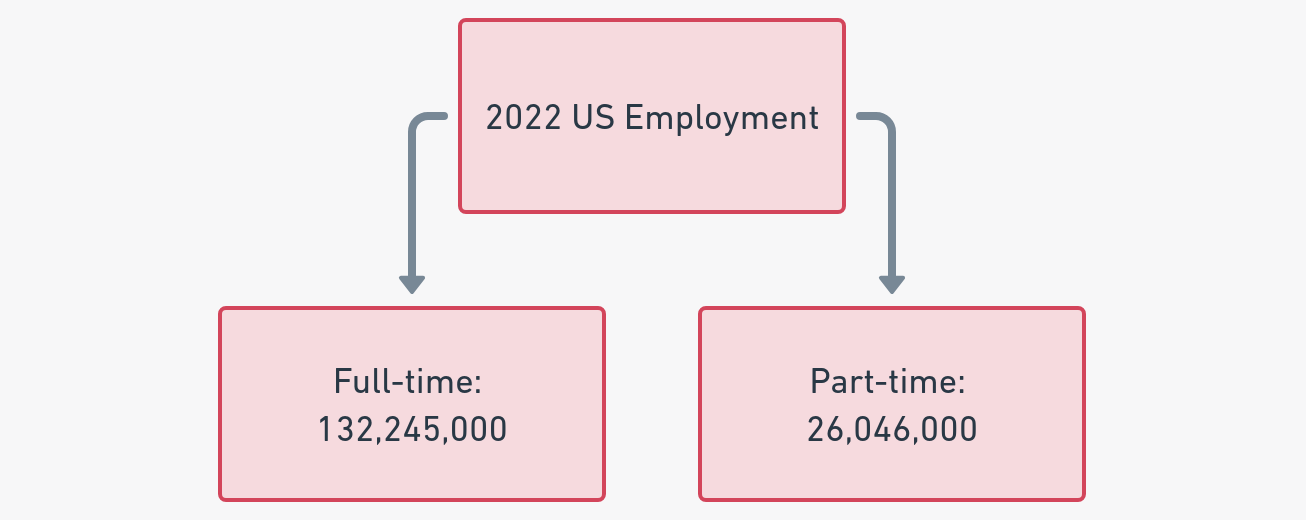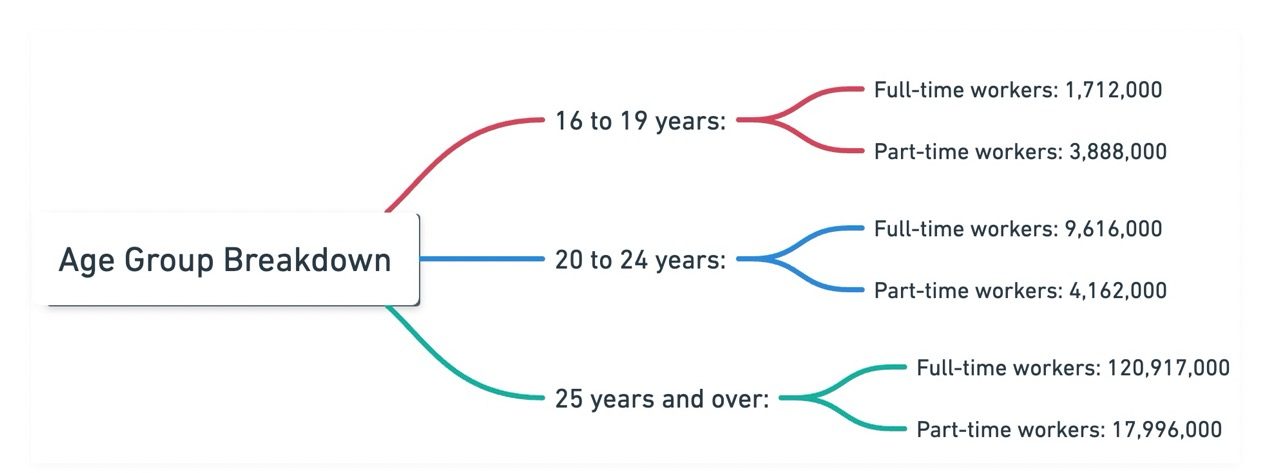30-sec Summary:
Did you know that full-time employment in the United States reached 132,245,000 in 2022, far exceeding part-time employment of 26,046,000?
But what’s behind this huge difference?
Is there a deeper story behind these numbers?
Why do some prefer the stability of full-time jobs, while others prefer the flexibility of part-time positions?
Let’s find out!
TABLE OF CONTENTS
- Definition and Legal Aspects
- Hours of Work
- Pay and Compensation
- Benefits and Perks
- Flexibility and Scheduling
- Making the Right Choice
- Use This Software to Manage Your Shifts ✅
Definition and Legal Aspects
According to the Fair Labor Standards Act (FLSA), which governs much of the country’s employment, the concept of part-time and full-time employment, surprisingly, lacks a clear-cut definition in U.S. federal law.
That means part-time vs full-time jobs aren’t explicitly differentiated.
The lack of a standardized definition forces employers to determine whether their workforce is full-time or part-time.
Such determinations can be based on company policy, industry standards, or other criteria deemed relevant by the employer.
Consequently, the amount of time considered “full-time” may differ from organization to organization.
Here are some interesting insights into the full-time vs part-time job landscape in the US:
| Full-time employment in the United States reached 132,245,000 in 2022, far exceeding part-time employment of 26,046,000. |
| Women work part-time at a higher rate than men. Men, on the other hand, work full-time at a higher rate. |
| In the course of an employee’s career, they are more likely to work full-time rather than part-time as they age. |
Hours of Work
In general, full-time employment encompasses a workweek between 32 and 40 hours. Some benchmarks put the standard at 35 hours a week.
On the other hand, part-time jobs can be very broad, with a few hours to 35 hours each week. Having the flexibility of part-time jobs allows for this wide range, catering to a wide variety of needs.
In some professions, a 40-hour week is the standard for full-time employment. This is common in traditional corporate jobs, where 8-hour days are the norm.
However, certain occupations and industries may consider 30 hours a week full-time. For example, professions where shift work is common might consider 30 hours a week as full-time.
| Factorial Insight: The Organization for Economic Co-operation and Development (OECD) defines full-time work as 30 hours. |
Pay and Compensation
Part-time and full-time compensation can be complicated, since the pay scales and benefits can vary depending on the job and the employer.
Part-time Employees
Workers who work part-time are mostly paid hourly, so their earnings are directly related to their hours.
There are no guaranteed hours in part-time work, which leads to fluctuations in weekly earnings based on workload and employer requirements.
Full-time Employees
A full-time employee can be salaried or hourly.
A salary employee gets paid regularly (e.g., monthly or biweekly) based on a fixed annual amount. They’re usually called “exempt,” which means they don’t get overtime pay, no matter how many extra hours they work.
As mandated by labor laws, hourly full-time employees are typically nonexempt. That means they get overtime pay for work beyond the standard workweek.
Pay Disparities between full time and part time employees
The pay scales for full-time jobs are usually higher than those for part-time jobs, not just because of the longer hours, but because of the higher responsibilities, expertise, and commitment involved.
| Factorial Insight: In 2023, the average part-time job pays $14 per hour. |
Benefits and Perks
The benefits offered to full-time employees are typically extensive. It is common for them to have health, dental, vision, and life insurance coverage, as well as paid time off, retirement plans, and other perks provided by their employer.
Employees on part-time contracts may not qualify for many of the company-sponsored benefits that their full-time counterparts enjoy. However, some companies do offer them benefits such as employee discounts.
Flexibility and Scheduling
Some demographics are especially attracted to part-time jobs due to their reduced hours and flexible shifts. Students can work around their class schedules, parents can coordinate childcare or school timings, and individuals with other commitments or pursuits can take advantage of the flexibility.
| Factorial Insight: A survey found that 70% of part-time workers chose these roles because they were flexible. |
Generally, full-time positions have more structured and consistent schedules. For example, the “9-to-5” workday refers to an eight-hour standard workday. While full-time roles are predictable, part-time jobs might not offer as much flexibility.
| Factorial Insight: In a study, 65% of full-time employees wished for more flexible working hours, highlighting their current roles’ structured nature. |
Making the Right Choice
There are a lot of things to consider when deciding whether to work part-time or full-time. Here’s a breakdown:
- Personal Priorities: For some, spending time with family or pursuing a hobby is important. 55% of part-timers chose reduced hours to maintain a better work-life balance.
- Financial Needs: Your financial obligations can heavily influence your employment choice. It’s true that full-time roles come with higher salaries and benefits, but part-time roles can also provide income. 40% of part-time workers depend on their jobs as a secondary source of income, according to statistics.
- Career Goals: A full-time job might be more aligned with your aspirations if you’re looking to climb the corporate ladder, learn specialized skills, or be a leader. 60% of managers started as full-time employees.
- Other Commitments: Study shows 35% of part-time workers are concurrently enrolled in education. People who have other commitments, like schooling, caregiving, or small businesses, may find part-time work more convenient.
The decision between part-time and full-time work is complicated. You have to weigh your personal and professional goals, financial needs, and other commitments before you make a decision.
You can now manage shifts in a few clicks without spending hours creating a schedule!






